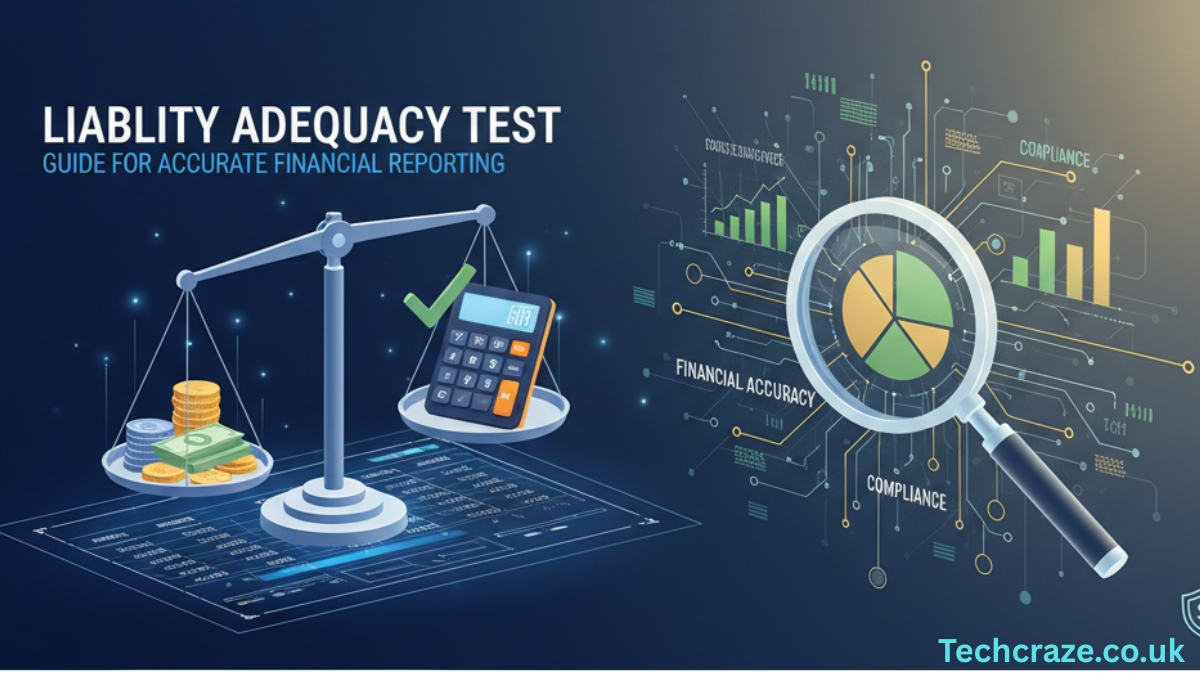Guides
BestAutoXperts.com: Your Go-To Hub for Automotive Solutions

“BestAutoXperts.com is a reliable online platform for car enthusiasts, buyers, and everyday drivers seeking expert automotive guidance. It provides detailed car reviews, buying tips, maintenance advice, and industry insights, helping users make smarter decisions about vehicles. The platform covers topics like latest car models, performance comparisons, DIY repair guides, and safety tips. BestAutoXperts.com bridges the gap between professional automotive knowledge and practical everyday use, serving as a one-stop resource for informed and confident driving decisions.”
When it comes to cars, people want fast, reliable, and expert solutions. BestAutoXperts.com has emerged as a trusted digital hub for automotive guidance. Whether you are a car owner seeking repair tips, a buyer searching for vehicle reviews, or an enthusiast wanting to explore new technologies, this platform offers valuable information.
The website is designed to simplify automotive knowledge for everyone. It caters to both beginners and experienced drivers, making it a versatile resource in the auto industry. By covering topics like maintenance, repair, buying advice, and the latest trends, BestAutoXperts.com helps users make informed decisions with confidence.
Automotive Expertise Made Accessible
One of the standout qualities of BestAutoXperts.com is how it translates complex automotive knowledge into simple, easy-to-follow content. Instead of overwhelming readers with technical jargon, the platform explains concepts in a clear and practical manner.
This approach ensures that users can actually apply the advice in real-life situations. Whether it’s learning how to change brake pads, understanding engine warning lights, or comparing hybrid vs. electric cars, the site delivers practical insights. In short, it bridges the gap between professional expertise and everyday users.
Car Maintenance and Repair Guides
Car maintenance is often a challenge for many drivers, but BestAutoXperts.com simplifies it with step-by-step repair and servicing guides. These articles cover everything from oil changes to advanced diagnostic issues.
Each guide is written in a way that even first-time car owners can follow. By offering clear explanations, visual references, and actionable steps, the platform makes car care more approachable. Regular maintenance tips not only save money but also extend the lifespan of vehicles, and BestAutoXperts.com ensures users are equipped with the right knowledge.
Honest Car Reviews and Buying Advice
Buying a car can be overwhelming, especially with so many models and options in the market. BestAutoXperts.com helps users by providing detailed and unbiased reviews. These reviews highlight pros, cons, pricing, performance, and overall value.
The website also offers buying guides that compare cars within the same category. For instance, a user can read about the best SUVs for families or the top fuel-efficient cars under a budget. This level of detail allows buyers to weigh their options carefully before making a decision.
Spotlight on Automotive Technology
Modern cars are packed with technology, and BestAutoXperts.com stays ahead by exploring innovations in the auto world. From electric vehicles (EVs) and autonomous driving systems to infotainment upgrades and safety features, the site breaks down how these technologies impact drivers.
The platform also highlights future trends in the automotive industry. Readers can learn about upcoming car launches, the role of artificial intelligence in driving, and how sustainability is shaping the future of vehicles. This keeps users informed and ready for changes in the auto market.
Community-Driven Insights
Another strength of BestAutoXperts.com is its focus on community engagement. Readers are encouraged to share their experiences, ask questions, and leave feedback. This creates a cycle of learning where users benefit not only from expert advice but also from real-life stories of other drivers.
By combining professional knowledge with community-driven insights, the website builds trust. It also ensures that the content remains relevant and relatable for its audience.
Why BestAutoXperts.com Stands Out
With so many automotive websites online, it’s natural to wonder what makes this one unique. The answer lies in its holistic approach the site doesn’t just stop at tips or reviews but provides an entire ecosystem of automotive knowledge.
Its clean design, easy navigation, and updated content make it user-friendly. Plus, its focus on both traditional and modern vehicles ensures that every type of reader finds something useful. Whether you drive a classic car, a modern hybrid, or are planning to buy an EV, BestAutoXperts.com has something tailored for you.
Conclusion
BestAutoXperts.com is more than just an automotive blog it’s a comprehensive platform for car enthusiasts, owners, and buyers. From maintenance and repairs to buying guides and the latest tech updates, it covers everything under one roof.
By combining expert knowledge, user-friendly writing, and a community-driven approach, the site ensures that readers feel empowered and informed. As the automotive industry evolves, BestAutoXperts.com continues to be a reliable companion for anyone passionate about cars.
FAQs
What is BestAutoXperts.com?
BestAutoXperts.com is an online platform that provides car maintenance guides, repair tips, buying advice, and the latest updates on automotive technology.
Does BestAutoXperts.com offer unbiased car reviews?
Yes, the platform shares detailed and honest reviews covering pros, cons, features, and value, helping users make smart car-buying decisions.
Can beginners learn from BestAutoXperts.com?
Absolutely. The content is written in a simple and practical way, making even complex automotive topics easy to understand for new car owners.
Does BestAutoXperts.com cover electric and hybrid cars?
Yes, it covers modern automotive technology, including electric vehicles (EVs), hybrids, and innovations like autonomous driving.
Why should I trust BestAutoXperts.com?
The platform combines expert knowledge with community insights, ensuring reliable, practical, and relatable information for all types of car enthusiasts.
Business
Liability Adequacy Test: Guide for Accurate Financial Reporting

“The Liability Adequacy Test is essential for the financial health of insurance companies, enabling them to detect reserve deficiencies, enhance reporting accuracy, and manage risk. By employing updated assumptions and data-driven methods, insurers ensure compliance with global regulations and promote long-term stability and growth.”
The liability adequacy test is an important financial assessment used in insurance and accounting to ensure that the liabilities recorded on a company’s balance sheet are enough to cover future obligations. The test helps organizations confirm that their reserves, estimates, and provisions will meet the actual cost of claims or commitments. This prevents unexpected financial gaps that could affect stability or investor confidence.
Companies conduct this test regularly to stay aligned with accounting standards and industry regulations. It also offers transparency by showing whether the financial assumptions behind liabilities are realistic. When the test reveals insufficient reserves, companies must adjust their liabilities immediately, which strengthens accuracy in financial reporting.
Why the Liability Adequacy Test Matters
The test is vital because it ensures that financial statements reflect true economic obligations. Without it, companies risk underreporting liabilities, which can mislead stakeholders and inflate profitability. Accurate liability recognition supports informed decision-making for investors, managers, and regulators.
It’s also a key requirement under international financial reporting standards. These standards emphasize that companies must regularly check the adequacy of their liabilities to prevent future solvency issues. A reliable test helps reduce financial surprises and promotes trust in the company’s long-term planning.
How the Liability Adequacy Test Works
The process involves comparing the carrying amount of liabilities with the present value of expected future cash flows. These cash flows may include claims, expenses, benefits, and any additional related costs. If the estimated future cash flows exceed the liabilities recorded, then the company must increase its reserves.
Actuarial models are often used to perform these calculations. These models consider factors like historical claim data, market trends, inflation, and risk predictions. The result is a more precise estimate of future obligations that helps companies maintain financial health.
Key Components Included in the Test
Several elements are evaluated when performing the test. These include claim reserves, premium liabilities, and anticipated expenses linked to managing future claims. The test also looks at potential changes in the economic environment that may influence costs over time.
Each component plays a role in shaping the final assessment. By reviewing these details, companies gain deeper insight into how their financial position might shift. This helps improve accuracy and reduces the chances of unexpected financial strain later on.
Role of Actuaries in the Test
Actuaries are central to the liability adequacy test. They bring analytical expertise to evaluate risk, calculate future obligations, and build forecasting models. Their skill in understanding trends and interpreting data makes the test more reliable and objective.
Their involvement also ensures that the test meets professional and regulatory standards. By using advanced methods and current market information, actuaries help keep the company’s liability estimates up-to-date and trustworthy.
Liability Adequacy Test in the Insurance Industry
The insurance sector relies heavily on this test because future claims and benefits make up a large part of its financial responsibilities. Insurers must ensure that premiums collected today will be enough to pay for claims tomorrow. The test helps identify shortfalls early so insurers can adjust pricing, reserves, or strategies as needed.
Regulators also require insurance companies to maintain accurate reserves to protect policyholders. As a result, regular testing is essential for compliance, financial stability, and maintaining trust in the insurance system.
Implications of Failing the Test
When a company fails the liability adequacy test, it means that the liabilities on record are not sufficient. This triggers an immediate need to strengthen reserves, which may impact profitability and reported earnings. It can also affect the company’s reputation if stakeholders view it as poor financial management.
However, addressing deficiencies promptly helps the company avoid long-term problems. Increasing liabilities ensures that obligations will be met, which ultimately reinforces financial strength and transparency.
How Companies Adjust After the Test
If gaps are found, companies usually increase their provisions or reserves. They may revise their assumptions about risks, inflation, or future expenses to make estimates more realistic. This update helps future financial statements reflect a more accurate view of the company’s obligations.
Organizations may also review their pricing strategies or investment portfolios after the results. These adjustments support long-term growth and reduce exposure to financial uncertainty.
Benefits of a Strong Liability Adequacy Framework
A consistent and accurate testing framework helps companies stay ahead of financial challenges. It strengthens stability, supports risk management, and helps leadership make strategic decisions based on reliable data. With a strong framework, companies can adapt faster to market changes and improve forecasting accuracy.
The framework also boosts transparency, which is essential for gaining trust from investors, regulators, and clients. Reliable testing reduces the chance of hidden liabilities that could lead to sudden financial shocks.
Future Trends in Liability Adequacy Testing
As financial environments evolve, so will the methods used in liability testing. The rise of advanced analytics, artificial intelligence, and real-time data tracking is making the process more precise. These tools help companies identify risks earlier and refine projections with better accuracy.
Regulators are also updating their guidelines as industries grow more complex. This means companies will need to stay informed about changes and maintain flexible systems that adapt to new standards.
Common Challenges Companies Face
Many companies struggle with changing economic conditions that affect long-term estimates. Inflation, shifting market trends, and unpredictable claims can make calculations difficult. Another challenge is maintaining high quality data that reflects current realities instead of outdated assumptions.
Despite these challenges, companies that invest in strong data systems and expertise can achieve better results. Accurate information helps simplify the test and improves overall financial reliability.
Ensuring Accurate Data for the Test
Data quality is crucial because inaccurate or incomplete information can lead to misleading results. Companies need systems that collect and manage detailed historical data, market insights, and operational expenses.
Regular updates and audits help maintain data accuracy. When combined with actuarial insight, high-quality data leads to a more reliable liability adequacy assessment.
Companies that adopt modern risk tools will gain a competitive edge.
Conclusion
The Liability Adequacy Test is a crucial tool for ensuring the financial health and credibility of insurance companies. It helps organizations identify deficiencies in reserves, improve reporting accuracy, and manage risk more effectively.
By using updated assumptions, risk margins, and data-driven methods, insurers can maintain strong financial positions and comply with global regulatory standards. LAT serves not only as a regulatory requirement but as a strategic tool for long-term stability and growth.
FAQs
What is the Liability Adequacy Test?
The Liability Adequacy Test is a financial assessment used by insurers to check whether their recorded liabilities are enough to cover future policy obligations. If the test shows a shortfall, companies must increase their reserves to stay compliant.
Why is the Liability Adequacy Test important?
It protects policyholders and ensures the insurer remains financially stable. By reviewing expected cash flows and comparing them to current reserves, the company can detect underfunded liabilities early.
How is the Liability Adequacy Test performed?
Actuaries estimate future cash flows, including claims, expenses and premium income. These estimates are then discounted and compared with the recorded liabilities. If the liabilities are lower than the expected future outflows, an adjustment is required.
Which companies are required to perform a Liability Adequacy Test?
Insurance companies and financial institutions that manage policyholder liabilities must perform this test. It is a regulatory requirement under international accounting standards such as IFRS 4 and IFRS 17.
What happens if liabilities fail the adequacy test?
If liabilities are found to be insufficient, the company must immediately strengthen its reserves. This adjustment helps ensure accurate financial reporting and protects the company’s long-term solvency.
Blog
Aelftech.com: Powering the Future of Digital Transformation

“Aelftech.com is an Australian technology and digital solutions based company that helps businesses grow through SEO, web development, eCommerce, and marketing services. It offers features like registration for users, earning programs, guest posting, and a transparent privacy policy. With its skilled team and future-ready strategies, Aelftech stands out as a trusted name for digital growth and innovation.”
In a fast-changing digital world, aelftech.com stands out as a reliable technology and marketing solutions platform. It specializes in helping businesses grow through services like web development, SEO, digital marketing, and software solutions. Whether you’re a startup looking to build your online presence or an established company aiming to scale, Aelftech’s team brings the right blend of innovation and expertise.
Aelftech.com focuses on making technology accessible to everyone. From eCommerce development to SEO campaigns, their approach is data-driven and result-oriented. The website acts as a one-stop destination for anyone looking to upgrade their digital game.
About Aelftech.com
The About Aelftech.com section gives a complete picture of the company’s mission, vision, and core values. The brand was built with a goal to provide affordable yet high-quality tech services for global clients. Their philosophy revolves around three pillars: innovation, transparency, and reliability.
Over the years, Aelftech has built a reputation for being client-focused. Their professionals work closely with businesses to understand their specific needs and design custom digital strategies that deliver measurable results.
Register on Aelftech.com
One of the key features that makes aelftech.com so practical is its simple registration process. Users can register on aelftech.com in just a few minutes to access exclusive services, project updates, and client resources. Registered members get early insights into the company’s latest tech developments, SEO packages, and marketing trends.
This easy onboarding experience helps businesses start their digital journey without complications, making Aelftech one of the most user-friendly platforms in the tech industry.
Earn with Aelftech.com
Aelftech.com isn’t just about providing services it’s also a place where users can earn with aelftech.com. Through referral programs, affiliate marketing opportunities, and content collaborations, the platform rewards people who help spread the word. For freelancers and digital marketers, it’s a great way to generate passive income while working with a trusted tech brand.
These earning opportunities highlight how Aelftech values community involvement and business partnerships.
Magento Service Companies by Aelftech.com
Aelftech.com is known for its strong background in Magento development services. As one of the leading Magento service companies by aelftech.com, they deliver scalable eCommerce solutions tailored for businesses of all sizes. Their developers create high-performing online stores with advanced features, smooth checkout systems, and strong security.
This expertise makes Aelftech a trusted choice for retailers who want to stand out in competitive eCommerce markets.
SEO Companies 2025 Aelftech.com
Looking ahead, SEO companies 2025 aelftech.com is becoming a popular search trend. Aelftech is already setting benchmarks for what modern SEO should look like. From local SEO strategies to global ranking campaigns, their team combines AI-driven analytics with creative content marketing.
As businesses prepare for the digital challenges of 2025, Aelftech.com continues to lead the way with adaptive SEO solutions that improve search visibility and boost traffic sustainably.
Brisbane Local SEO Companies Aelftech.com
With a growing international presence, Aelftech.com also supports local businesses in regions like Brisbane. As one of the top Brisbane local SEO companies aelftech.com, it helps local enterprises compete online using tailored SEO tactics. The company’s focus on localized search ensures that businesses get noticed by nearby audiences turning online visibility into real-world growth.
This localized approach makes Aelftech stand out among global competitors who often overlook regional needs.
Client Case Aelftech.com
The client case aelftech.com section showcases real-world success stories. These case studies reflect how Aelftech’s strategies have helped brands improve their rankings, enhance customer engagement, and increase sales. Each client project serves as proof of their commitment to measurable results.
By highlighting transparent client experiences, Aelftech builds trust with potential customers who want to see genuine, data-backed success.
Team Aelftech.com
Behind every successful project is the team aelftech.com, a group of professionals with diverse skills in technology, marketing, and design. From developers to SEO experts and content strategists, every member plays a vital role in maintaining quality and innovation.
The collaborative culture within Aelftech ensures that clients get consistent communication, creative solutions, and top-notch execution from start to finish.
Guest Post on Aelftech.com
For content creators, marketers, and bloggers, the opportunity to guest post on aelftech.com opens doors to a larger audience. It allows writers to share insights on technology, innovation, and digital marketing while gaining visibility on a reputable platform. This initiative helps build a network of industry voices and strengthens Aelftech’s position as a thought leader in tech blogging.
Guest posting also supports community engagement, making Aelftech.com a hub for collaboration and shared learning.
Social Media Ranking Aelftech.com
In today’s connected world, social media visibility can define business success. Social media ranking aelftech.com is one of the company’s key focus areas. Their digital marketing team manages campaigns that boost engagement, brand awareness, and follower growth on platforms like LinkedIn, Instagram, and X (formerly Twitter).
With the right mix of creativity and analytics, Aelftech ensures every client achieves measurable improvements in online reputation.
Privacy Policy Aelftech.com
Transparency is central to how Aelftech operates. The privacy policy aelftech.com section clearly outlines how user data is collected, stored, and protected. This not only complies with global data protection standards but also assures clients that their personal and business information is safe.
By maintaining high privacy standards, Aelftech.com reinforces its image as a trustworthy and responsible service provider.
Conclusion
Aelftech.com has positioned itself as a leading name in digital innovation offering a perfect mix of technology, marketing, and creative services. From eCommerce solutions to SEO campaigns, their expertise spans across industries and geographies. The platform’s user-centric approach, transparency, and forward-thinking strategies make it an ideal choice for businesses in 2025 and beyond.
Whether you’re looking to build, grow, or optimize your online presence, aelftech.com has the tools, team, and technology to make it happen.
FAQs
What is aelftech.com?
Aelftech.com is a digital technology company that offers services like SEO, Magento development, and digital marketing. It helps businesses strengthen their online presence and reach target audiences effectively.
How can I earn with aelftech.com?
Users can earn by collaborating with aelftech.com through content partnerships, guest posting, affiliate programs, and digital marketing collaborations. It also offers opportunities to work with its global client base.
Is it free to register on aelftech.com?
Yes, registration on aelftech.com is free and simple. You can create an account to access services, explore career opportunities, or contribute to their guest post and digital programs.
Does aelftech.com offer SEO and Magento services?
Absolutely. Aelftech.com specializes in SEO strategy, local SEO (including Brisbane-based services), and Magento development to help businesses improve rankings and sales performance.
What makes aelftech.com different from other tech companies?
Aelftech.com stands out because of its transparency, skilled team, client-centric approach, and commitment to innovation. Its services combine technology, marketing, and strategy to deliver measurable growth results.
Entertainment
Exhentaime: Watch High-Quality Anime Online in 2025

If you’re searching for a place to watch anime without constant buffering or endless ads, you’ve likely come across Exhentaime. Exhentaime is an online streaming site where users can watch high-quality anime episodes and movies for free. It’s known for its clean interface, smooth playback, and quick access to both old classics and new releases. Yes, Exhentaime is generally safe to use if you take basic precautions like using an ad-blocker or VPN.
While it’s not an officially licensed platform, most users browse it safely by avoiding suspicious links or pop-ups. Compared to other anime sites in 2025, Exhentaime ranks high for video quality, simplicity, and easy access to trending shows. If you’ve tried platforms like Crunchyroll or 9Anime and found them too restrictive or slow, you’ll notice Exhentaime feels lighter and faster. It doesn’t force sign-ups, which makes it convenient for quick viewing sessions.
What Is Exhentaime?
A Straightforward Definition
Exhentaime is an online platform that lets users stream anime shows and movies in high quality without needing to sign up or pay. It serves as a one-stop hub for anime fans who want quick, hassle-free access to both new and classic titles. The main goal of Exhentaime is simple make anime viewing easier, faster, and more enjoyable for everyone.
Most users visit Exhentaime to watch episodes instantly without dealing with complicated menus or registration steps. It offers full-length anime series, films, and short specials all under one clean layout. While its exact launch year isn’t confirmed, estimates from anime discussion forums suggest it became popular around 2021 and now attracts hundreds of thousands of monthly users worldwide.
Why It Stands Out Among Anime Platforms
Exhentaime stands out because it combines fast streaming, HD playback, and simple design without forcing sign-ups. Viewers can start watching in seconds, which sets it apart from competitors that require logins or paid subscriptions. The video player loads quickly, even on slower networks, which makes it convenient for users with limited bandwidth. Exhentaime supports multiple resolutions, so you can pick between standard and high-definition depending on your connection. This flexibility is a big reason why regular viewers keep returning.
The interface is clean and easy to navigate no clutter, no pop-ups blocking the screen. Categories are arranged by genre, release year, and popularity, helping users find what they want with just a few clicks. It’s especially friendly for beginners who might feel lost on more complex sites. In short, while Exhentaime doesn’t carry the official brand weight of major platforms like Crunchyroll or Netflix, its simplicity and reliability make it a solid choice for fans who just want to watch anime without hurdles.
Key Features of Exhentaime in 2025
HD Streaming Quality
Exhentaime offers full HD streaming with smooth playback, even on slower internet connections. Videos load fast, and buffering is minimal compared to many free anime platforms. The player adjusts quality automatically based on connection strength, so users rarely face interruptions during episodes. Unlike other streaming sites that restrict HD options to paid members, Exhentaime allows anyone to watch in 720p or 1080p.
This open-access model makes it a go-to choice for users who value crisp visuals without paying subscription fees. When tested side by side with mid-tier platforms, Exhentaime holds its own in clarity and load time. While some premium sites like Crunchyroll deliver 4K on select titles, Exhentaime’s optimized compression gives consistent quality that looks sharp on laptops, tablets, and phones alike. If you’re someone who can’t stand blurry screens or lagging streams, this feature alone makes Exhentaime worth checking out.
Wide Anime Library
Exhentaime’s anime library covers nearly every genre from classic action epics to lighthearted romance and fantasy adventures. Users can find popular titles alongside niche series that aren’t available on mainstream services. The platform is known for keeping up with seasonal releases. When a new anime drops in Japan, it often appears on Exhentaime within days.
Fans of older content also benefit since many retro series and films are archived in full, letting viewers relive nostalgic favorites. For fans exploring different styles, Exhentaime organizes its catalog by categories like Shonen, Slice of Life, Mecha, and Comedy. This layout saves time and helps users quickly pick shows that match their mood.
Easy Navigation and Interface
Exhentaime’s layout is simple everything is where you expect it. The search bar works efficiently, returning accurate results even with partial names. Filters let users sort by genre, release year, or popularity in seconds. The design is lightweight, which means it runs smoothly across all major devices phones, tablets, laptops, and smart TVs.
You don’t need to install extra software or apps; just open the site in your browser, and you’re ready to stream. Whether you’re watching at home on a big screen or on a commute using mobile data, the platform adjusts seamlessly. That adaptability makes it suitable for both casual viewers and daily anime watchers.
Is Exhentaime Safe to Use?
Straight Answer on Safety
Exhentaime is generally safe to browse if users take basic precautions like using a VPN and ad-blocker. The site hosts external ads and pop-ups, which can occasionally redirect to unrelated pages, but these are easy to avoid with browser safety tools. The platform doesn’t require personal details or sign-ups, so there’s no risk of your data being stored or shared. That’s one reason many viewers prefer it over apps that collect emails or payment info.
Still, safety depends on how carefully you browse clicking random links or downloading unknown files can lead to issues on any free streaming site. To stay protected, users often install trusted extensions such as uBlock Origin or AdGuard to filter out pop-ups. A VPN (like ProtonVPN or NordVPN) can also hide your IP address and protect your browsing activity, especially in regions where streaming rules are stricter.
|
Platform |
Requires Login | Pop-up Frequency |
VPN Recommended |
|
Exhentaime |
No | Moderate |
Yes |
|
Crunchyroll |
Yes | None |
No |
|
9Anime |
No | High |
Yes |
Legal and Ethical Considerations
Exhentaime operates in a legal gray area because it doesn’t hold official streaming rights for most anime content. The site sources videos from third-party hosts, which means availability can vary depending on your region. While many users rely on it for convenience, it’s not an officially licensed distributor. To stay on the right side of the law, it’s smart to treat Exhentaime as a temporary solution rather than a main streaming hub.
If an anime is available legally on services like Netflix, Crunchyroll, or HIDIVE, watching there supports creators and ensures safe access. Responsible streaming means balancing convenience with respect for copyright. Many anime fans use Exhentaime to preview series before deciding whether to buy or subscribe elsewhere. That approach keeps viewing accessible without ignoring fair use ethics.
How to Watch Anime on Exhentaime
Step-by-Step Guide
Watching anime on Exhentaime is quick and doesn’t need sign-ups or payments. Anyone can start streaming within minutes using just a web browser. Here’s how to get started if it’s your first visit:
- Open the Exhentaime website:
Type the site address directly into your browser bar. Avoid clicking on look-alike domains that might host fake versions. - Browse or use the search bar:
You’ll find categories like New Releases, Trending, Popular, or If you already know the anime name, type it into the search bar for faster results. - Select your title:
Click the anime cover image or episode link. A short description and list of available episodes will appear. - Choose your stream server:
Exhentaime often provides multiple sources. If one link buffers, try another. This feature keeps viewing uninterrupted even during heavy traffic hours. - Press play and enjoy:
The built-in video player supports both full-screen and adjustable quality settings. There’s no need to register or download extra software.
Tips for Smooth Streaming
A stable internet connection is key to getting the best from Exhentaime. Aim for a minimum speed of 5 Mbps for standard definition and 10 Mbps for HD. You can check your speed with tools like Fast.com or Speedtest before watching. If the video buffers often, lower the resolution temporarily to 720p. This small change helps the episode load faster without major quality loss.
It’s also best to close other heavy tabs or background downloads to free up bandwidth. Switching to a wired connection (Ethernet) or sitting closer to your Wi-Fi router can also improve stability. Mobile viewers can toggle “data saver mode” off for smoother playback. For best results, always keep your browser updated. Outdated versions sometimes conflict with embedded players, causing lag or playback errors.
Alternatives to Exhentaime
Other Popular Anime Sites
While Exhentaime is a favorite among anime enthusiasts for its simplicity and no-login access, several other platforms also offer extensive anime libraries and smooth streaming. Below are some of the most popular options in 2025 each with its own advantages and drawbacks:
- Crunchyroll
- Pros: Officially licensed content, subtitles in multiple languages, and HD streaming with minimal ads for free users.
- Cons: Some episodes are premium-only, requiring a subscription for full access.
- Popularity Data: Over 120 million registered users and 12 million paid subscribers worldwide (Statista, 2025).
- 9Anime
- Pros: Huge catalog with both dubbed and subbed anime, fast updates for new episodes, and multiple streaming servers.
- Cons: Pop-up ads can be intrusive without an ad-blocker.
- Popularity Data: Among the top 5 anime streaming sites globally, with over 50 million monthly visits.
- Gogoanime
- Pros: Simple interface, minimal buffering, and organized by genre, year, and type (OVA, series, movie).
- Cons: Not an official source — content legality varies by region.
- Popularity Data: Averages 40–45 million monthly visitors according to SimilarWeb (2025).
- AnimeHeaven
- Pros: Straightforward layout, offers download options, and includes lesser-known titles.
- Cons: Occasional downtime and fewer HD options compared to larger sites.
- Popularity Data: Receives roughly 10–15 million visits per month
Each of these platforms caters to different viewing preferences. Crunchyroll appeals to users who want official, high-quality releases, while 9Anime and Gogoanime attract those looking for faster uploads and flexible access.
Why Some Users Still Prefer Exhentaime
Despite the competition, Exhentaime continues to hold a loyal fan base, largely due to its ease of use and unrestricted access. Unlike many premium services, users don’t have to create an account, pay a fee, or deal with country-based content locks. Its lightweight interface loads quickly, even on mobile devices or slower connections, and doesn’t bombard visitors with long ad breaks or complex menus.
For those who just want to search, click, and watch, Exhentaime delivers exactly that experience. In short, users who value speed, simplicity, and freedom often keep returning to Exhentaime, even if they explore other platforms occasionally.
Common Issues and Fixes
Even the most reliable streaming platforms can experience occasional hiccups. Exhentaime, while popular for its simplicity and speed, isn’t completely immune to technical issues. Below are some of the most common problems users face and practical solutions to keep streaming smooth and frustration-free.
Playback Errors
Sometimes, anime episodes on Exhentaime might fail to play or show a “video not available” message. These issues are often temporary and caused by minor browser or server-side glitches.
Common Causes:
- Server overload during peak viewing hours.
- Outdated browser or missing video codecs.
- Temporary link errors on specific episodes.
Quick Fixes:
- Refresh the page or try a different server (if available).
- Clear browser cache and cookies.
- Switch to an updated browser like Chrome, Edge, or Firefox.
- If the issue persists, try opening the link in incognito mode to bypass local cache problems.
Loading or Buffering Problems
Slow loading or frequent buffering can ruin the anime-watching experience. While Exhentaime is known for smooth streaming, these problems usually arise from network connectivity or browser settings rather than the site itself.
Possible Causes:
- Weak or unstable internet connection.
- Too many background tabs or downloads.
- Browser cache overloaded with old data.
Solutions:
- Close unnecessary tabs or background downloads.
- Pause the stream for a few seconds to allow pre-buffering.
- Clear your browser cache and restart your device.
- Lower the video quality temporarily if your connection is slow.
Regional Restrictions
Some users may find that Exhentaime is inaccessible or partially blocked in their region due to local regulations or network filtering.
Why It Happens:
- Regional content restrictions or government-imposed filters.
- Internet Service Provider (ISP) blocking streaming domains.
How to Fix It:
- Use a reliable VPN (Virtual Private Network) to change your IP location.
- Select a VPN server in a country where Exhentaime is accessible.
- Avoid free VPNs with limited bandwidth they may slow down streaming.
What’s Next for Exhentaime in 2025
The anime streaming scene continues to evolve rapidly, and Exhentaime isn’t staying behind. With user habits changing and technology advancing, the platform is preparing for major updates and features aimed at improving accessibility, user experience, and overall streaming quality. Let’s take a look at what 2025 holds for Exhentaime and how it aligns with emerging anime trends.
Expected Site Improvements
Exhentaime’s developers are rumored to be focusing on enhancing the streaming interface and optimizing mobile performance a move driven by growing demand from users who prefer watching anime on their smartphones.
Here’s what’s expected in 2025:
- Improved Video Servers:
- Faster content delivery with less buffering.
- Adaptive streaming for automatic quality adjustment based on internet speed.
- Enhanced User Interface (UI):
- A cleaner, more interactive homepage layout.
- Personalized recommendations based on recent watch history.
- Easier genre-based navigation with quick filters like “Trending Now,” “Most Watched,” and “Fan Favorites.”
- Community Features:
- Discussion forums or comment sections under each episode.
- User ratings and favorites list for tracking popular titles.
- Safer Viewing Environment:
- Fewer intrusive ads and improved ad filtering systems.
- Optional registration for users who want to save preferences or playlists.
Growing Anime Trends
As Exhentaime prepares for its next phase, it’s also adapting to the latest anime viewing trends that are shaping 2025. The global anime audience is expanding beyond Japan, and viewers are looking for more diverse genres and better visual fidelity.
Top Anime Trends in 2025:
- AI-Enhanced Animation: Studios are integrating AI for smoother action sequences and hyper-detailed art styles.
- Psychological and Slice-of-Life Stories: Demand for relatable, character-driven plots has increased, especially among adult viewers.
- Revival of 2000s Classics: Nostalgia is big in 2025, with remakes of popular titles like Bleach, Naruto, and Fullmetal Alchemist seeing renewed interest.
- Cross-Media Experiences: Many anime are now linked with games or VR experiences, and Exhentaime might soon support extra media content or trailers.
Final Thought
Exhentaime stands as a practical choice for anime fans in 2025. It brings together a large content library, high-quality streaming, and a smooth interface without forcing users to jump through hoops. For those who value convenience and variety, it checks most of the boxes that make anime streaming enjoyable. It’s important, however, to use the platform responsibly. Some regions may have licensing limits, so using tools like a VPN or trusted ad-blocker can help ensure safe access.
Always verify you’re watching content legally and securely. While competitors like Crunchyroll and 9Anime continue to dominate with licensing deals and official releases, Exhentaime fills a gap for users seeking simplicity and direct access without paid subscriptions. It’s a reminder that not every anime viewer wants the same thing flexibility still matters.
-

 News7 months ago
News7 months agoCristian Romero Opens Door to Tottenham Exit as Atletico Madrid Eyes £43 Million Move for Argentina Star
-

 Blog8 months ago
Blog8 months agoFeedbackMagazines.org/: A Hub for Engaging Content
-

 News7 months ago
News7 months agoNancy Mace Faces Criticism and Support After Heated Exchange With Trans Activist at South Carolina Event
-

 Tech9 months ago
Tech9 months agoExploring Eporer: The Digital Revolution You Need to Know
-

 News7 months ago
News7 months agoBluesky confirms new verification system to fight fake profiles and boost user confidence on its growing US-based platform
-

 News7 months ago
News7 months agoPassengers From Luxury Rovos Rail Train Thank Zimbabwe for Support as They Arrive in Victoria Falls After Collision Near Gwanda
-

 News7 months ago
News7 months agoDefense aides say internal Pentagon purge punished them for resisting secretive war agendas in Washington
-

 Tech9 months ago
Tech9 months agoKingxomiz: Unlocking Innovation and Personal Growth

